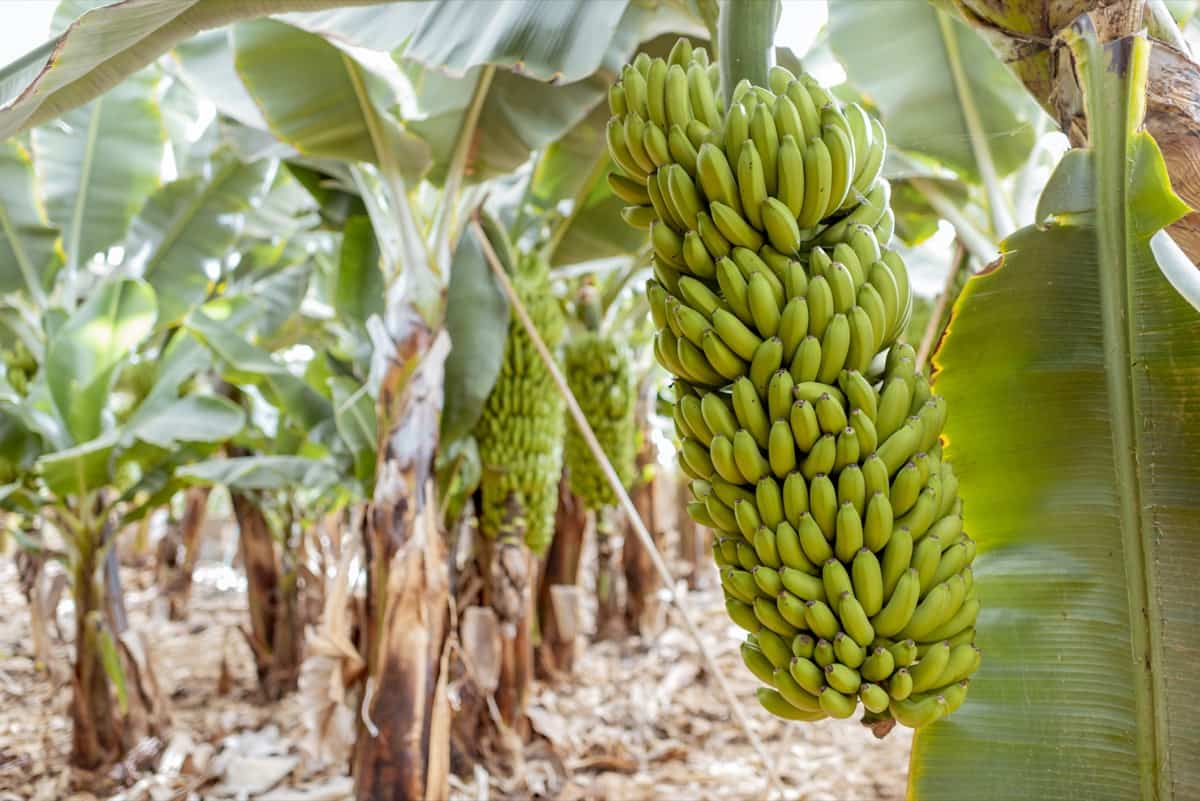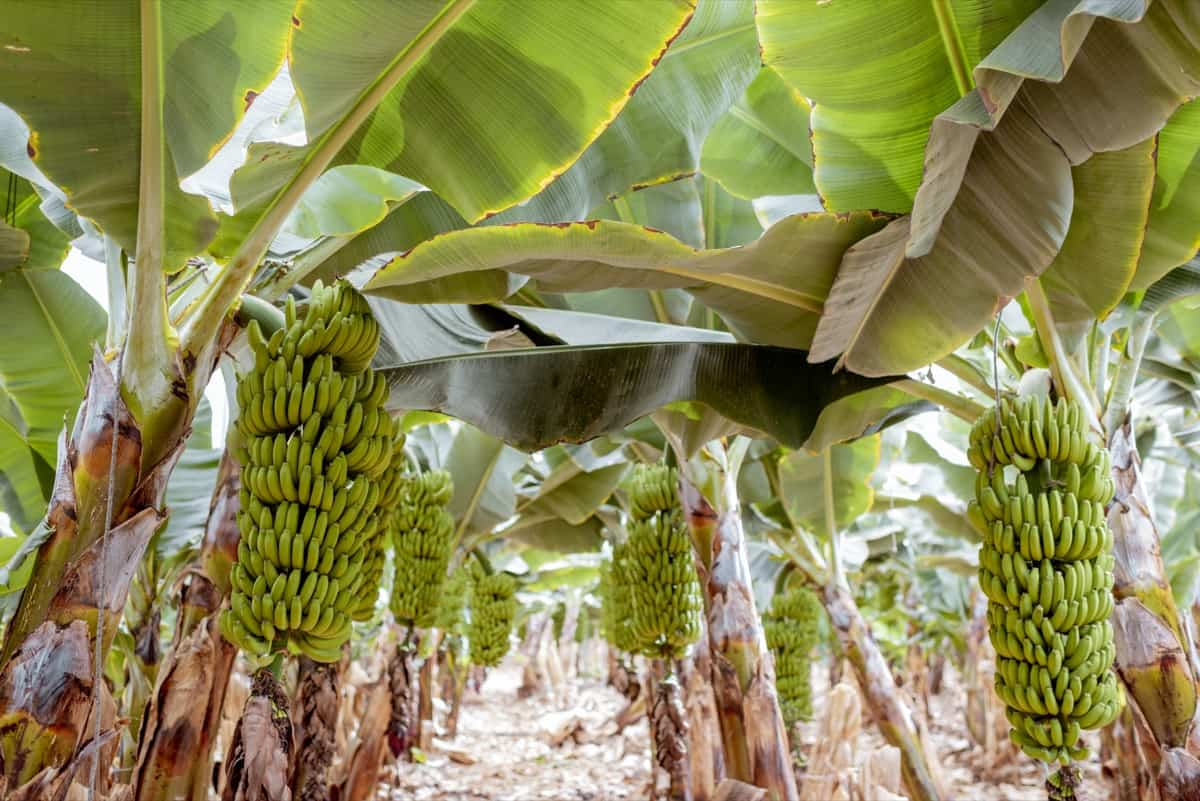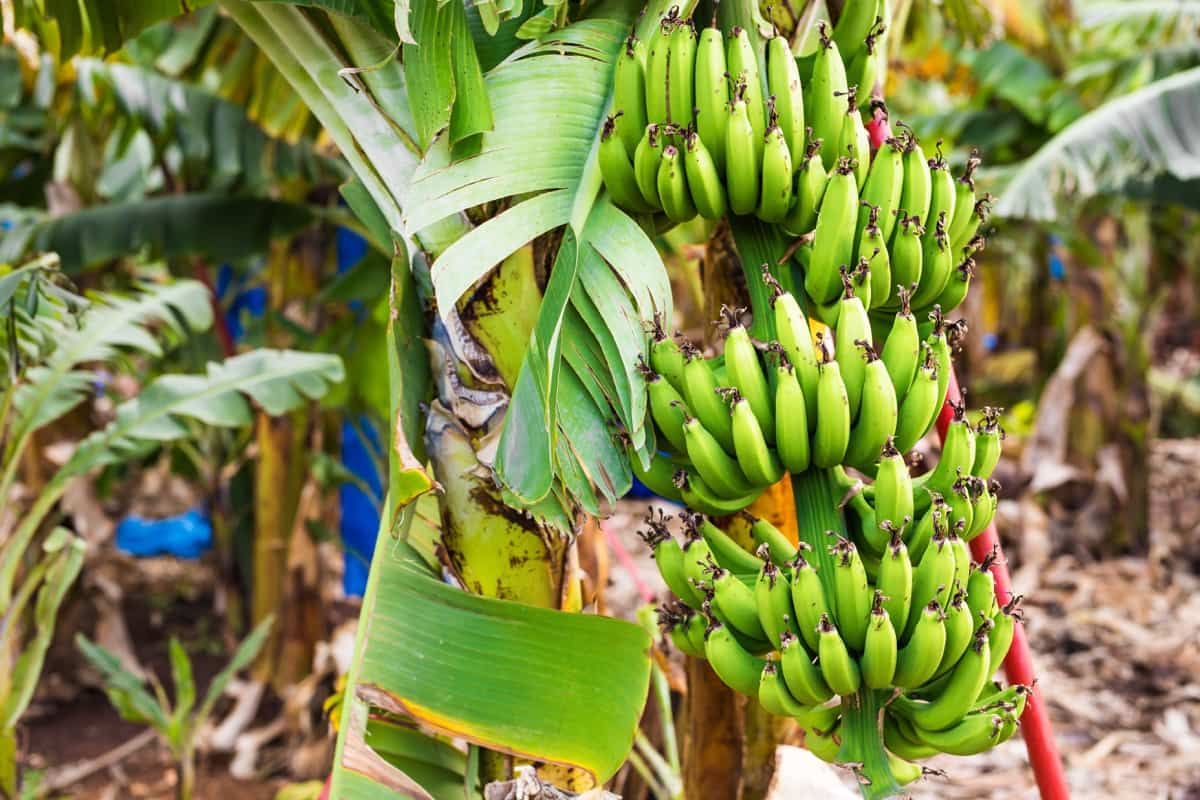Banana Peel Splitting is a complex physiological disorder affecting Banana crops’ productivity and profitability. Banana’s Peel Splitting physiological disorder affects Banana crops, causing them to produce low-quality yields. Peel Splitting is a significant disorder that affects the quality and marketability of bananas, resulting in significant economic losses for growers and exporters. This disorder is a significant challenge for banana growers, and effective management strategies are required to reduce its impact.

It is, therefore, crucial to understand the disorder’s underlying mechanisms and identify effective management strategies to mitigate its impact. This article provides an overview and discussion of Peel Splitting, including its symptoms, causes, and management strategies, to aid in sustainable banana production, effective control, and prevention of this physiological disorder in banana crops, ensuring profitable returns from this crop.
Banana Peel Splitting and Hard Lump Disorders Management
Characteristics of Banana Peel Splitting Disorder
- The disorder is characterized by the splitting of the peel along the longitudinal axis of the fruit, which can occur at any stage of development.
- The split can occur on one or both sides of the fruit. It is more commonly observed in the later stages of fruit development.
- The severity of the disorder can vary, ranging from mild splitting to complete separation of the peel, which can lead to fruit rot and spoilage.
- The area around the split can also show changes in color, such as browning or yellowing, indicating that the fruit is starting to decay.
- In severe cases, the split can extend deep into the fruit, causing internal damage.
- The splitting of the peel makes it less appealing to consumers and reduces its market value.
Causes of Banana Peel Splitting Disorder Development
- The disorder is often associated with changes in temperature, humidity, and other environmental factors that can affect fruit growth and development.
- When banana fruits are exposed to extreme environmental conditions, their growth and development can be affected, leading to the development of this disorder.
- Uneven irrigation can result in uneven growth, leading to the development of this disorder.
- Excessive use of pesticides and fertilizers can interfere with the nutrient balance of the plant and cause damage to the fruit.
- Other factors implicated in this disorder’s development include calcium and potassium imbalances, uneven irrigation, and excessive use of fertilizers.
Favorable Conditions of Banana Peel Splitting Disorder
- High temperatures above 30°C can cause excessive water loss from the fruit, leading to a lack of turgidity and weakening cell walls, making the fruit more susceptible.
- Low relative humidity of less than 60% is another favorable condition for developing this disorder.
- This disorder is most prominent in the rainy season immediately after prolonged dry spells.
- Insufficient water supply can cause the fruit to lose turgidity, leading to the development of the disorder.
- Rapid fruit growth can cause the fruit skin to split due to the inability of the skin to stretch quickly enough to accommodate the growth.
- When calcium is deficient in the soil, or when the uptake of calcium by the plant is inhibited, it leads to weaker cell walls, making the fruit more susceptible.
- Excessive use of potassium fertilizers or low potassium levels in the soil can lead to potassium imbalances.
Management Measures of Banana Peel Splitting Disorder
- Adopt good cultural practices such as proper irrigation and fertilization and monitoring and maintaining optimal environmental conditions during fruit development.
- Irrigate the field evenly to prevent water stress.
- Providing the right amount of shade can reduce the impact of environmental stresses such as high temperatures and low humidity.
- The use of calcium and potassium fertilizer supplements has been shown to reduce the incidence of this disorder.
- Overripe fruits are more prone to splitting and should be harvested before they become too mature.
- Provide ventilation and maintain the temperature at 18°C or apply ethylene for 1-2 days at 15-17°C and above 95% relative humidity to aid fruit ripening.
In case you missed it: Banana Choke Throat and Chilling Injury Disorders Management: Symptoms, Causes, Favorable Conditions, and Treatment

Banana Hard Lump Physiological Disorder
Banana Hard Lump physiological disorder is a common disorder that affects banana crops worldwide. Banana Hard Lump physiological disorder can significantly affect the quality of the banana fruits. This disorder can cause major yield losses and financial losses to farmers, reducing the quality and market value of the affected fruit.
Effective management strategies for banana Hard Lump disorder are essential to reduce the economic impact on farmers and maintain the productivity and quality of banana crops. This article provides an overview of Banana Hard Lump Disorder, including its symptoms, causes, and management strategies, to aid in the development of effective control measures and improve Banana production.
Characteristics of Banana Hard Lump Disorder
- The Banana Hard Lump disorder is characterized by the presence of pinkish hard lumps or bumps on the surface of the fruit.
- In some cases, they may appear as small, round bumps, while in others, they may appear as large, irregular lumps.
- The lumps or bumps are hard and firm in texture, making the fruit unmarketable, as consumers prefer bananas with a smooth texture.
- The affected areas on the fruit may appear darker or lighter than the remaining parts, depending on the stage of the disorder.
- The hard lumps or bumps can occur on any part of the fruit, including the stem and the blossom end.
- This disorder can affect different varieties of bananas and occur at any fruit development stage.
Causes of Banana Hard Lump Disorder Development
- The activity of pests and pathogens such as nematodes, mites, and fungi can cause the Banana Hard Lump disorder.
- Extreme temperature variations and high humidity levels can stress the plant, leading to the development of the disorder.
- Imbalances in essential nutrients such as potassium, calcium, and boron can cause the disorder.
- Water stress due to insufficient irrigation or waterlogging can cause the disorder.
- Exposure to herbicides, fungicides, or insecticides can cause the disorder.
Favorable Conditions of Banana Hard Lump Disorder
- This disorder tends to occur more frequently during high temperatures and humidity.
- In humid conditions, the fruit surface can remain moist for extended periods, creating favorable conditions for the development of the disorder.
- Calcium deficiency is particularly linked to the development of the disorder.
- When stressed, the plant can divert nutrients away from the fruit, forming hard lumps or bumps.
- Some banana varieties are more susceptible to the disorder than others.
In case you missed it: Banana Kotta Vazhai and Finger Drop Disorders Management: Symptoms, Causes, Favorable Conditions, and Treatment

Management Measures of Banana Hard Lump Disorder
- Applying foliar fertilizers can help correct nutrient deficiencies and improve fruit quality.
- Proper irrigation management is essential to prevent water stress in banana crops.
- Controlling pests and diseases that can damage the fruit surface, such as nematodes, mites, and fungi, can prevent the disorder.
- Select banana varieties that are less susceptible to the Banana Hard Lump disorder.
- Spray 2,4-D on the bunches or dip the cut part of the bunch’s peduncle for 6-8 minutes to reduce lumps.
- Deworming Schedule for Dogs/Puppies: A Beginners Guide
- How to Prevent and Control Parasites in Goats
- Beneficial Insects in Pest Management
- Natural Solutions for Pest Control in Flower Gardens
- Types of Fungicides Used in Agriculture
- Common Issues in the Fruit Development Stage of Pomegranate Farming
- Fruit Development Issues in Papaya: Easy Solutions and Treatment
- Soil-Borne Diseases and How to Protect Your Plants
- Practices to Prevent Disease Spread in the Garden